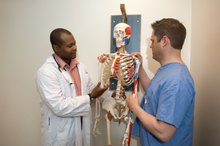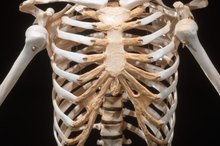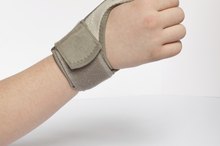How the Skeletal System Works With the Muscular
The human body is a complex network of symbiotic systems. The skeletal system and the muscular system work together as the framework for the body as well as providing the pieces that allow for movement.
Skeletal System
The human skeleton consists of 206 separate bones. The bones provide a solid frame to support the body as well as protection for internal organs. The bones come together at joints which allow for movement of individual limbs as well as movement of the entire body in conjunction with skeletal tissue and the muscular system.
Muscular System
How the Skeletal System Works With Other Systems in Your Body
Learn More
The muscular system is composed of more than 600 muscles. These include the involuntary muscles of the heart and the smooth muscles of the internal organs. The skeletal muscles connect to the bones and work with connective tissue at the joints to allow for movement. The muscles connect to the nervous system and allow initiation of movement through nerve signals to and from the brain.
Connective Tissue
The bones and muscles are supported by connective tissue, which plays an integral role in structural support. Ligaments consist of densely packed collagen fibers that connect bone to bone. Their high tensile strength keeps the skeletal system supported while allowing movement at the joints. Tendons also consist of collagen fibers of high tensile strength but connect muscles to bone. Tendons are also designed to support compressive force, allowing for pulleylike actions of muscles around a bone. Not much blood flows through either tendons or ligaments, which means slower healing from strains or tears.
Generating Force
Types of Joints in the Skeletal System
Learn More
Motor neurons connected to individual muscle fibers bridge the pathways of the musculoskeletal system once signals from the brain initiate a movement. The nerve impulses generated -- known as action potentials -- transport neural information to the muscles, eventually causing the muscle fibers to contract. As the muscles contract, the connective tissue at the joint draws the bone into movement along the designated pathway dictated by the skeletal structure of the joint. The action may be flexion, lateral sliding, rotation, pronation and supination, or movement in multiple directions, as is the case with a ball-and-socket joint.
Imbalance and Injury
Since the skeletal and muscular systems both support each other, injury to part of either system has an immediate effect on the other. Additionally, weakness or imbalance in particular muscles can cause strain and injury to connective tissue, potentially leading to damage directly to the bone. Similarly, strained or torn muscles may encourage imbalances within the muscle, placing extra strain on connective tissue to compensate for weakness. Strained or torn connective tissue can weaken muscles and alter joint structure, eventually leading to arthritis.
Related Articles
References
- Monkey Do It: Total Number of Bones in the Human Body
- Human Anatomy and Physiology: Elaine N. Marieb, RN, PhD
- Inner Body: Full Muscular System Description
- Essentials of Strength Training and Conditioning; Chaper 4: Bone, Muscle and Connective Tissue Adaptations to Physical Activity; Brian Conroy
- Biomechanics: Structure and Function of Ligaments and Tendons
- National Academy of Sports Medicine Optimum Performance Training for the Fitness Professional: Michael A. Clark
Writer Bio
Jullie Chung writes regularly for various websites. She is a nationally certified fitness trainer and performance enhancement specialist through the National Academy of Sports Medicine and trains regularly in yoga, flatwater kayaking, boxing and mixed martial arts. An avid outdoor fan, she regularly hikes, climbs and trail runs.









